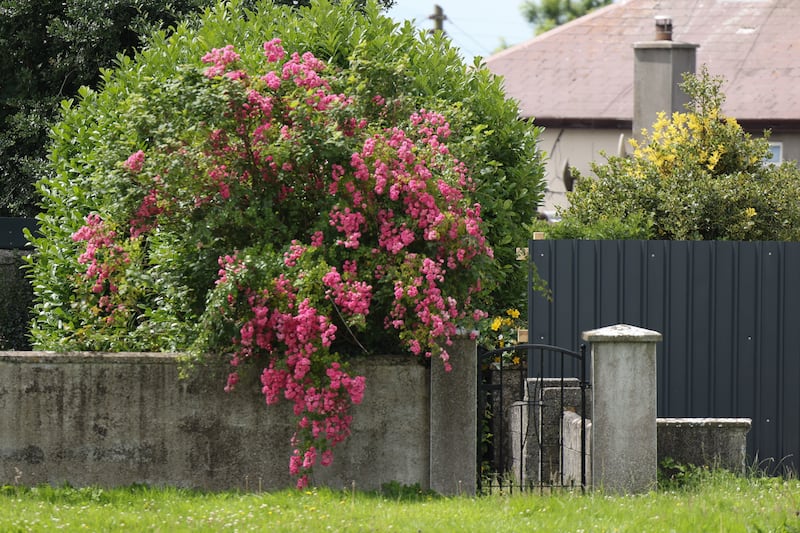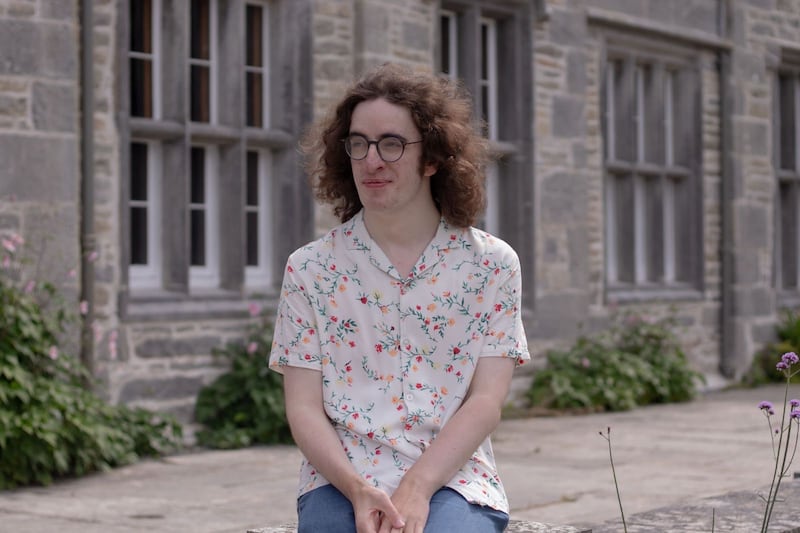An 81-year-old man has called for the range of DNA samples being collected from family members, in order to to identify remains at Tuam Mother and Baby Home, to be extended to cousins.
The rules governing the search for relatives of those buried at the site exclude cousins, with the Department of Children, Disability and Equality citing “scientific challenges” in relation to their inclusion. However, other relatives at a similar level of distance from the deceased, such as grandnieces and grandnephews, are included.
Ted Steede says that his cousin, Josephine, was born in the Central Hospital in Galway in 1933, before being moved to Tuam Mother and Baby Home. She died of whooping cough shortly after. Mr Steede’s aunt, Agnes, died almost a week after giving birth.
Josephine’s name was listed among the 796 children who died at the Tuam Mother and Baby Home between 1925 and 1960, compiled by historian Catherine Corless .
READ MORE
Mr Steede became a member of the Tuam Mother and Baby Home Alliance, which was involved in putting pressure on the Government to investigate and excavate the site of the home.
Part of the process, under the Institutional Burials Act 2022, which was drawn up by the Department of Children, involves a collection of DNA samples from “eligible family members”, who believe they are related to someone buried at the site. This aims to assist in the identification of human remains that may be recovered.
The Act defines eligible family members as people who have reasonable grounds to believe that they are a child, parent, sibling, half-sibling, grandparent, grandchild, aunt, uncle, niece, nephew, half-niece, half-nephew, grandniece or grandnephew of the person who is buried at a site.
“They listed so many people”, but “first cousins were excluded,” said Mr Steede. He said it had “annoyed” him that he cannot supply a DNA sample.
The excavation of the Tuam site began on July 14th and access to it is now closed off to the public.

Mr Steede said he visited the site during the official opening of the excavation, when survivors of the Mother and Baby Home and their families were invited.
He said he wasin touch with local TDs regarding his situation, however he was “still getting no satisfaction” on the issue of providing his DNA for identification.
Speaking of their forensic work, he said “it looks like their hands are tied unless the Government revisits the legislation”.
When asked if there was a reason for cousins to be excluded as eligible family members, Forensic Science Ireland (FSI), who will perform DNA testing and matching for The Office of the Director of Authorised Intervention, Tuam (ODAIT), who are in charge of the excavation, said: “The level of participation by FSI regarding DNA sample testing at Tuam Mother and Baby Home is set out in The Institutional Burials Act 2022″.
A spokesperson for the Department of Children, Disability and Equality said that scientific advice outlined during the Pre-Legislative Scrutiny process “highlighted scientific challenges in relation to the inclusion of cousins”.
“In the case of cousins, the variation in shared DNA can be much greater as the common ancestor is the grandparent rather than the parent.
“This makes it notably more difficult to draw conclusions about a familial link as, at the lower levels, first cousins will be indistinguishable from more distant relatives.”

They added that issues arise due to the “likely low levels of DNA that will be available from the remains, due to degradation and the size of the bones involved, as well as the general level of relatedness in a country like Ireland.
“These factors increase uncertainty in estimating relationships, particularly relationships, such as cousins, where the variability in shared DNA is greater.”
Dr David MacHugh, professor of functional genomics at University College Dublin, told The Irish Times that a “half niece, half nephew, grand niece and grand nephew have the same expected familial genomic relationship as would a first cousin”.
A familial genomic relationship is the degree to which individuals are genetically related. It considers how much genetic material (DNA) two people who come from the same family share.
He said it was “a mystery” why cousins were not eligible to provide DNA.
He noted that the average familial genomic relationship from cousin to cousin was, on average, 12.5%. The same figure was true in the relationship of a grandaunt/ granduncle to grandniece/ grandnephew and vice versa.
[ Tuam families can see ‘light at the end of a very long tunnel’Opens in new window ]

Similarly, the familial genomic relationship from a half aunt/ half uncle to half niece/ half nephew was also on average, 12.5%.
Daniel Loftus, an independent genealogist and founder of Project Infant, which aims to compile the names of those who died in Mother and Baby Homes and other institutions, said the exclusion of cousins as eligible family members for DNA samples is a “missed opportunity”.
“Leaving it down to half siblings, and I think nieces, nephews, grandnieces, grandnephews, there’s only a limited amount of relationships that would be feasible to try to identify a Tuam baby.”
He added that “we should try to pull out all the stops”, given that the excavation is “monumental in that it’s the first of its kind of operation”.

He called for a wider net to be cast in the collection of DNA during the historic excavation and identification process.
He suggested there be a “means of allowing people to submit their DNA voluntarily, even if they suspect that they’re related to a Tuam baby”.
Breeda Murphy, of Tuam Mother and Baby Home Alliance, said if it was not possible to match remains to the DNA of cousins now, “with technologies being developed it should be available” in the future.
She commended Daniel McSweeney, the director of authorised intervention at Tuam, and his team for their work with Tuam Mother and Baby Home Alliance, including ”for their openness and willingness to include us at every opportunity – it’s a completely stark difference to how the Government has behaved".
She said families should be able to find remains. “They have not been fully supported, matter of fact they’ve been ignored for decades.”
She said many people had died “without ever seeking closure” for what happened to them or a relative in one of these institutions.
“We’re losing them regularly. We have people in hospital at the moment who might not make it – they are the voice of the survivor."
Mr Steede has had a sample of his DNA taken on his own accord, so that “even if I passed away in the morning, my DNA could be kept and stored, just in case they found my cousin”.
The ODAIT’s website states that those who fall outside the definition of an “eligible family member” can get in touch to “clarify your relationship and your family’s relationship to the Tuam institution” and “to consider the possibility that there is another living family member who may be eligible to give a DNA sample”.
It also states they will hear the “concerns and wishes” of the family member, allow them to “contribute to the consultation for the memorialisation process”, and allow them to be “kept up to date on work of ODAIT”.
It says that “if appropriate, the individual falling outside the definition of an “eligible family member” will be directed to the Tuam Identification Programme, or an Administrative Scheme set up to take DNA samples from eligible family members who are elderly or vulnerable, and who therefore require a sample to be taken on a more urgent basis.











